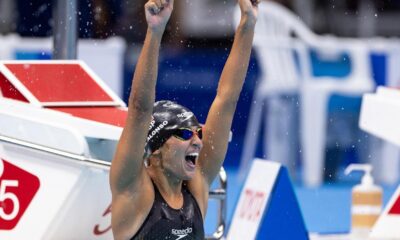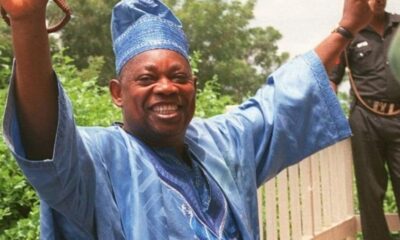HIV (Human Immunodeficiency Virus) is a serious condition that affects the immune system, making the body more susceptible to infections and certain cancers. One of the ways HIV manifests itself is through symptoms that appear on the skin and in the mouth. Recognizing these signs early can be crucial for diagnosis and treatment, as they often indicate a compromised immune system…Click Here To Continue Reading>> …Click Here To Continue Reading>>
Oral Symptoms of HIV
1. Oral Thrush (Candidiasis): One of the most common oral manifestations of HIV is thrush, a fungal infection caused by the overgrowth of *Candida* yeast. Thrush appears as creamy white patches on the tongue, inside the cheeks, roof of the mouth, and sometimes the throat. It can cause discomfort, pain, and difficulty swallowing. Thrush is often a sign that the immune system is weakened, allowing opportunistic infections to take hold.
2. Oral Hairy Leukoplakia: This condition is characterized by white, hairy-looking patches on the sides of the tongue. Unlike thrush, these patches cannot be scraped off. Oral hairy leukoplakia is caused by the Epstein-Barr virus and is more common in individuals with weakened immune systems, such as those with HIV. It often indicates that the virus is progressing and the immune system is deteriorating.
3. Gingivitis and Periodontitis: HIV-positive individuals are more susceptible to gum diseases like gingivitis (gum inflammation) and periodontitis (a more severe form that can lead to tooth loss). Symptoms include swollen, red, bleeding gums and, in more severe cases, painful ulcers and rapid gum and bone loss. These conditions can cause severe oral pain and affect overall oral health.
4. Aphthous Ulcers: Also known as canker sores, these are painful, small ulcers that appear on the soft tissues of the mouth, such as the inner lips, cheeks, and the base of the gums. While canker sores are common in the general population, HIV-positive individuals may experience them more frequently, and they can be larger and more painful.
Skin Symptoms of HIV
1. **HIV Rash:** An HIV rash is often one of the earliest signs of HIV infection. It usually occurs within the first two months after contracting the virus and is often described as a red, flat, or slightly raised rash, usually affecting the upper part of the body, including the chest, face, and sometimes the arms and legs. The rash may be accompanied by other flu-like symptoms, such as fever, fatigue, and swollen lymph nodes. READ FULL STORY HERE>>>CLICK HERE TO CONTINUE READING>>>
2. **Kaposi’s Sarcoma:** This is a type of cancer that often affects HIV-positive individuals, particularly those with advanced stages of the virus. Kaposi’s sarcoma appears as red, purple, or brown lesions on the skin and inside the mouth. These lesions can be flat or raised and often appear on the legs, face, or other parts of the body. The presence of Kaposi’s sarcoma is typically a sign of severe immune system damage and an AIDS-defining condition.
3. **Herpes Simplex Virus (HSV) Infections:** Recurrent herpes outbreaks are common in HIV-positive individuals due to a weakened immune system. These outbreaks often appear as clusters of painful blisters around the mouth (cold sores) or genital area. In HIV patients, herpes lesions can be more severe, last longer, and take longer to heal.
4. **Molluscum Contagiosum:** This viral skin infection causes small, firm, raised lesions that may have a dimple in the center. In individuals with HIV, these lesions can become widespread and more difficult to treat. They often appear on the face, neck, armpits, arms, and hands.
5. **Seborrheic Dermatitis:** This condition causes scaly patches, red skin, and stubborn dandruff, often affecting oily areas of the body such as the face, sides of the nose, eyebrows, ears, eyelids, and chest. Seborrheic dermatitis is more common and can be more severe in people with HIV.
Conclusion
Oral and skin symptoms are significant indicators of HIV infection and its progression. These symptoms often reflect a weakened immune system and can range from mild to severe. Recognizing these signs early is crucial for early diagnosis and timely treatment, which can significantly improve the quality of life for those living with HIV. It is essential for individuals who experience any of these symptoms, especially those at risk of HIV, to seek medical attention promptly for appropriate testing and care. Regular medical check-ups and effective antiretroviral therapy (ART) can help manage HIV, reduce the viral load, and prevent the progression to AIDS.


 SPORTS10 months ago
SPORTS10 months ago
 IN-THE-NEWS11 months ago
IN-THE-NEWS11 months ago
 METRO2 weeks ago
METRO2 weeks ago
 IN-THE-NEWS12 months ago
IN-THE-NEWS12 months ago
 HEALTH & LIFESTYLE9 months ago
HEALTH & LIFESTYLE9 months ago
 METRO10 months ago
METRO10 months ago
 HEALTH & LIFESTYLE11 months ago
HEALTH & LIFESTYLE11 months ago
 METRO2 weeks ago
METRO2 weeks ago


